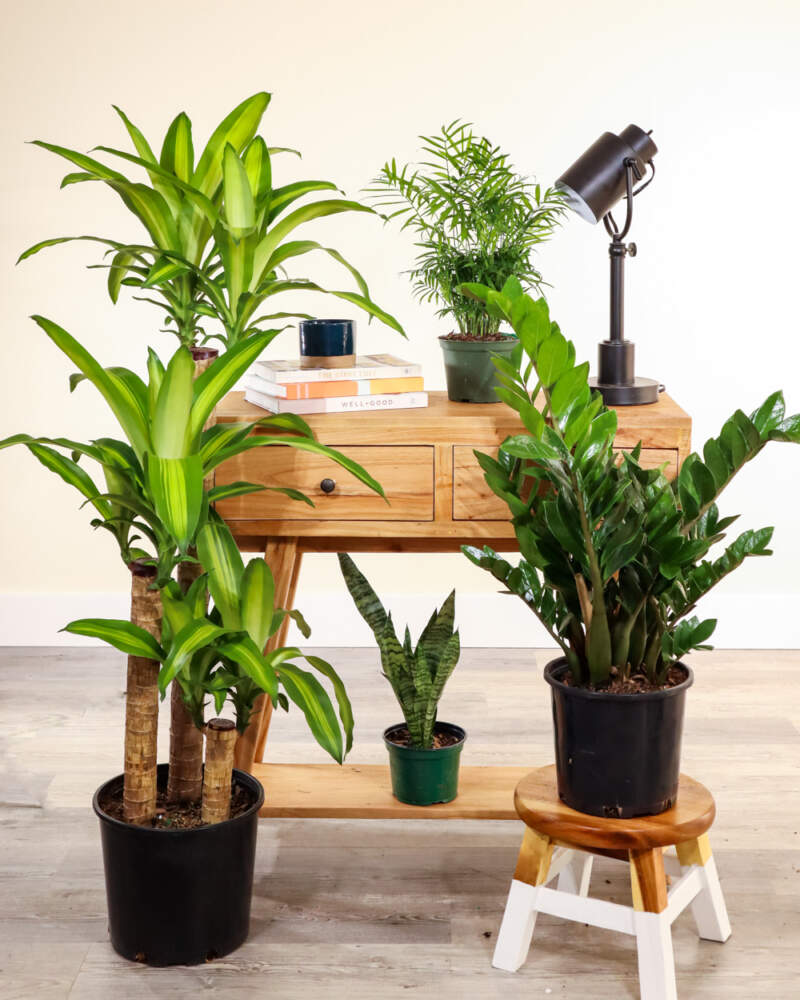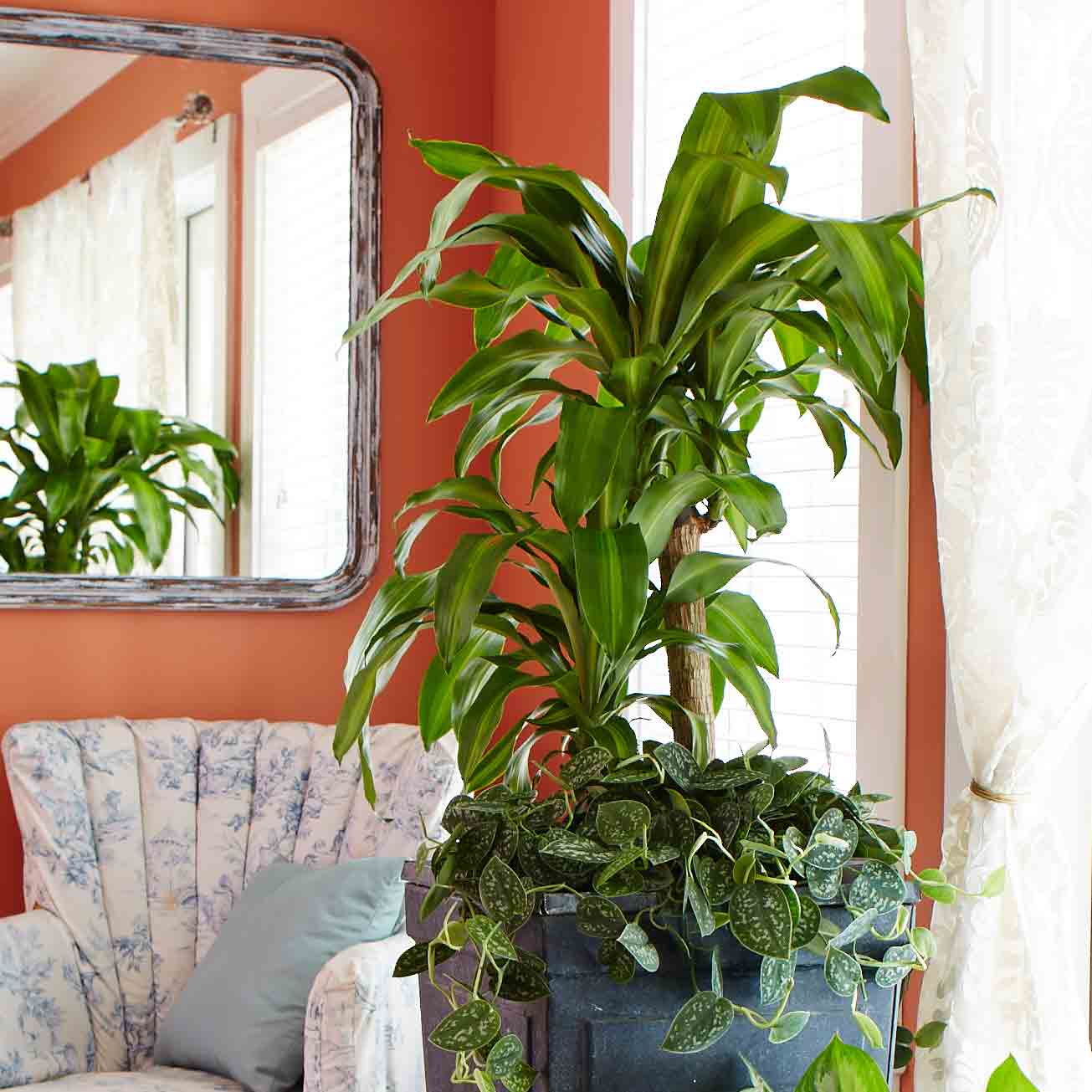Uncover the Secrets of Low-Light Indoor Plants and Just How They Boost Your Atmosphere
Low-light indoor plants have gathered boosting interest for their special capacity to boost both aesthetic charm and environmental high quality within homes and offices. These resistant species, consisting of the Serpent Plant and Peace Lily, not only prosper in difficult lighting problems but also play a pivotal function in air filtration and psychological wellness. Comprehending the details benefits and care demands of these plants can significantly influence your space. As we explore the details of their advantages, you may discover insights that can transform your surroundings in unforeseen means.
Benefits of Low-Light Indoor Plants
Although many people think that interior plants require abundant sunlight to prosper, low-light indoor plants use a wide range of advantages that make them perfect for numerous atmospheres. Among the key benefits is their versatility; they can thrive precede with minimal natural light, such as workplaces, cellars, or rooms with small home windows. This function enables people to improve their environments with greenery, adding to improved looks without the need for substantial lighting alterations.
Moreover, low-light indoor plants can dramatically improve interior air top quality by filtering harmful contaminants and releasing oxygen, making living rooms healthier. The presence of plants has been connected to better sensations of tranquility and focus.
Additionally, low-light plants commonly need less maintenance than their sun-loving equivalents, making them perfect for active individuals or those new to horticulture. Their resilience permits them to flourish with very little treatment, hence giving a fulfilling experience for plant fanatics and amateurs alike. In recap, low-light indoor plants serve both visual and functional purposes, making them important enhancements to any space.
Leading Low-Light Plant Ranges
Low-light indoor plants come in a variety of varieties, each offering unique attributes and advantages fit for dark environments. Among one of the most prominent selections is the Snake Plant (Sansevieria), recognized for its air-purifying abilities and building fallen leaves. This resistant plant thrives on disregard and can tolerate a variety of light conditions.
An additional exceptional option is the ZZ Plant (Zamioculcas zamiifolia), which includes shiny, dark environment-friendly leaves and is extremely drought-tolerant. Its adaptability makes it a favorite for offices and homes with restricted sunlight.
The Pothos (Epipremnum aureum) is likewise a top challenger, with its routing creeping plants and heart-shaped leaves - Best low-light indoor plants. This flexible plant can be educated to climb or cascade, including visual interest to any area
:max_bytes(150000):strip_icc()/lowlightplants01-e6ce112597f74b538fc83e28a39bf23b.jpg)
Treatment Tips for Low-Light Plants
Caring for low-light indoor plants calls for a nuanced understanding of their particular demands to make certain ideal growth and vitality. It is important to pick the ideal potting mix, as a well-draining dirt is essential to prevent root rot. A mix developed for houseplants, frequently containing peat moss and perlite, works well for a lot of low-light varieties.
Watering is another essential aspect of treatment. Low-light plants typically require less frequent watering contrasted to their sun-loving equivalents. discover this info here It is recommended to examine the leading inch of soil; if it feels completely dry, it's time to water. Overwatering can bring about difficulties such as mold and mildew and origin decay.
Fertilizing must be come close to with caution. Throughout the growing season, a diluted fluid fertilizer can be applied monthly, but in winter season months, lots of low-light plants enter dormancy and call for little to no fertilizing.
Lastly, it's essential to regularly cleanse the fallen leaves to eliminate dust, enabling much better light absorption. By adhering to these treatment tips, you can grow a thriving setting for your low-light indoor plants, boosting both their look and long life.
Enhancing Air High Quality With Plants
Indoor plants play a substantial duty in enhancing air quality within homes and office. Via the procedure of photosynthesis, these plants absorb co2 and release oxygen, adding to a much healthier ambience. Additionally, specific low-light interior plants have the ability to filter hazardous pollutants, such as benzene, formaldehyde, and trichloroethylene, which are generally discovered in interior environments.

In addition, the presence of indoor plants can increase humidity degrees, which aids alleviate dry skin and respiratory problems, additionally boosting total wellness. This ability to boost air high quality not just promotes physical wellness yet additionally sustains mental wellness.
Integrating low-light interior plants right into your living and you can check here functioning areas can cause a much more dynamic and invigorating setting (Best low-light indoor plants). Spending in these all-natural air cleansers is a straightforward yet reliable method for enhancing interior air top quality and promoting a healthier lifestyle
Creating a Tranquil Indoor Space
The assimilation of plants into living areas not just boosts air quality but additionally contributes to a serene ambience. Low-light interior plants, such as serpent plants and pothos, are especially effective in producing a peaceful setting, as they flourish in problems that may or else be unwelcoming for various other greenery. Their rich vegetation provides a calming visual, reducing stress and advertising leisure.
Incorporating these plants right into your office or home can stimulate a sense of peace and well-being. Tactically positioning them in areas where you invest significant time, such as living areas or work spaces, permits an immersive experience with nature, which has actually been revealed to enhance state of mind and cognitive function.
Furthermore, the gentle movement of leaves in action to air movement can create a vibrant aesthetic aspect that boosts the total atmosphere. Consider utilizing a variety of plant elevations and structures to include deepness and interest to your area. With thoughtful positioning and treatment, low-light indoor plants can transform any type of area right into a peaceful sanctuary, cultivating not just aesthetic contentment but likewise emotional and emotional wellness.

Verdict
Including low-light interior plants into numerous environments returns significant advantages, consisting of enhanced air quality and enhanced visual allure. The transformative power of low-light plants highlights their value in improving both work and domestic setups.
Although numerous people think that interior plants require bountiful sunshine to thrive, low-light interior plants offer a multitude of benefits that make them suitable for different atmospheres.Additionally, low-light interior plants can dramatically improve interior air quality by filtering system unsafe contaminants and releasing oxygen, making living spaces healthier. Furthermore, certain low-light interior plants have the capability to filter unsafe pollutants, such as trichloroethylene, formaldehyde, and benzene, which are commonly discovered in interior settings.
Low-light indoor plants, such as snake plants and pothos, are particularly effective in developing a peaceful environment, as they grow in click here now conditions that may or else be unwelcoming for other greenery.Including low-light interior plants right into numerous environments yields substantial advantages, including improved air high quality and improved visual charm.